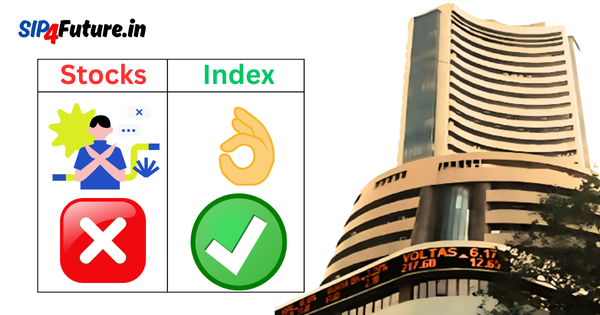Exide Industries, a cornerstone of India’s battery manufacturing sector, continues to demonstrate resilience in a dynamic economic landscape. As of May 6, 2025, Exide Industries (EXIDEIND) closed at Rs 370.25 on the National Stock Exchange (NSE), reflecting a neutral market sentiment. Despite rising raw material costs impacting EBITDA margins, the company reported a 4.82% revenue increase to Rs 4,379.50 crore in Q4 FY2025, with EBITDA growing by 4.15% to Rs 472.00 crore and net profit rising modestly by 1.18% to Rs 187.90 crore. This article delves into Exide Industries’ performance, sector influences, global market dynamics, and future outlook, providing a comprehensive analysis for investors and enthusiasts.
What Drives Exide Industries’ Market Position?
A Leader in Battery Manufacturing
Exide Industries is a dominant player in India’s automotive and industrial battery markets, supplying batteries for vehicles, renewable energy systems, and industrial applications. Its diversified product portfolio and strong distribution network have solidified its reputation. The company’s ability to maintain growth amidst cost pressures underscores its strategic cost management and market adaptability.
Financial Performance in Q4 FY2025
Exide Industries’ Q4 FY2025 results reflect both resilience and challenges:
| Metric | Q4 FY2025 | Change (%) |
|---|---|---|
| Revenue | Rs 4,379.50 crore | +4.82% |
| EBITDA | Rs 472.00 crore | +4.15% |
| Net Profit | Rs 187.90 crore | +1.18% |
While revenue growth is commendable, the modest net profit increase signals margin pressures, primarily due to elevated raw material costs, particularly lead, a key component in battery production.
Key Challenges: Rising Raw Material Costs
Lead prices have surged globally, driven by supply chain disruptions and increased demand for batteries in electric vehicles (EVs) and renewable energy storage. According to Moneycontrol, Exide Industries has partially offset these costs through price hikes and operational efficiencies, but margins remain under strain. The company’s ability to navigate these challenges will be critical for sustained profitability.
How Does the Automotive Sector Impact Exide Industries?
Growth in Electric Vehicles (EVs)
The automotive sector, a primary revenue driver for Exide Industries, is undergoing a transformative shift toward EVs. India’s EV market is projected to grow at a CAGR of 49% from 2022 to 2030, per a report by NITI Aayog. Exide’s investments in lithium-ion battery technology position it to capitalize on this trend. Its partnership with global players like SVOLT enhances its capabilities in EV battery production.
Government Policies Boosting Demand
Government initiatives, such as the Production Linked Incentive (PLI) scheme for advanced battery manufacturing, have bolstered Exide Industries’ growth prospects. The PLI scheme incentivizes domestic production, reducing reliance on imported batteries and supporting companies like Exide. Additionally, policies promoting EV adoption, like tax benefits and charging infrastructure development, indirectly drive demand for Exide’s products.
Challenges from Traditional Automotive Slowdown
While EVs are gaining traction, the traditional internal combustion engine (ICE) vehicle market remains significant. However, a slowdown in ICE vehicle sales, reported by SIAM, has slightly dampened demand for lead-acid batteries, Exide’s core product. Balancing its focus between EV and ICE markets will be key to sustaining growth.
What Role Does the Global Market Play?
Global Battery Demand Surge
The global battery market is experiencing robust growth, driven by the transition to renewable energy and EVs. According to a BloombergNEF report, global battery demand is expected to reach 2.6 TWh by 2030. Exide Industries, with its expanding lithium-ion portfolio, is well-positioned to tap into this demand, particularly in emerging markets.
Supply Chain Disruptions
Global supply chain challenges, including semiconductor shortages and logistical bottlenecks, have impacted the automotive and battery sectors. These disruptions have increased production costs for Exide Industries, as noted in its Q4 FY2025 results. The company’s ability to secure stable raw material supplies will be crucial for maintaining competitiveness.
Currency Fluctuations
As a player in the global market, Exide Industries is exposed to currency fluctuations. A stronger Indian rupee against the US dollar, as observed in early 2025 per Reserve Bank of India data, has helped reduce import costs for raw materials like lead. However, volatility in forex markets remains a risk.
How Are Government Decisions Shaping Exide Industries’ Stock?
Supportive Renewable Energy Policies
India’s push for renewable energy, with a target of 500 GW of non-fossil fuel capacity by 2030, per the Ministry of New and Renewable Energy, is a significant tailwind for Exide Industries. Batteries for solar and wind energy storage are a growing segment, and Exide’s expertise in industrial batteries positions it as a key supplier.
Import Tariffs and Local Manufacturing
The Indian government’s focus on “Make in India” has led to higher tariffs on imported batteries, benefiting domestic manufacturers like Exide Industries. These policies encourage local production and reduce competitive pressure from Chinese manufacturers, as highlighted in a Business Standard report.
Regulatory Risks
Stricter environmental regulations on lead-acid battery recycling, enforced by the Central Pollution Control Board, pose compliance costs for Exide Industries. While the company has invested in sustainable recycling practices, regulatory changes could impact profitability if not managed effectively.
When Should Investors Consider Exide Industries’ Stock?
Current Trading Conditions
As of May 6, 2025, Exide Industries’ stock price of Rs 370.25 reflects a neutral outlook, with no significant movement (0.00%) on the NSE. The stock’s price-to-earnings (P/E) ratio, around 28.5 based on BSE India data, suggests it is fairly valued compared to peers like Amara Raja Batteries. However, margin pressures may limit short-term upside.
Technical Analysis
Technical indicators, such as the 50-day moving average (Rs 365) and 200-day moving average (Rs 350), indicate a stable trend. The stock is trading above both averages, suggesting mild bullish momentum. However, investors should monitor support levels around Rs 360 and resistance at Rs 380, as per TradingView analysis.
Long-Term Investment Potential
Exide Industries’ strategic focus on EVs and renewable energy storage makes it a compelling long-term investment. Its robust financials, coupled with government support, position it for growth. However, investors should weigh near-term risks from raw material costs and regulatory changes.
What Are the Risks and Opportunities for Exide Industries?
Opportunities
- EV Market Expansion: Exide’s lithium-ion battery investments align with India’s EV growth.
- Renewable Energy Storage: Rising demand for solar and wind energy storage solutions.
- Government Support: PLI schemes and import tariffs enhance competitiveness.
Risks
- Raw Material Costs: Volatility in lead and lithium prices.
- Regulatory Compliance: Stricter environmental norms for battery recycling.
- Competition: Increasing presence of global players in India’s battery market.
Future Targets and Historical Returns
Analyst Price Targets
Research institutes have provided the following price targets for Exide Industries’ stock by the end of FY2026:
| Research Firm | Target Price (Rs) | Outlook |
|---|---|---|
| Motilal Oswal | 400 | Buy |
| ICICI Securities | 385 | Hold |
| HDFC Securities | 375 | Neutral |
These targets reflect optimism about Exide’s long-term growth, driven by its EV and renewable energy focus, though margin pressures temper short-term expectations.
Historical Returns
Exide Industries has delivered steady returns over the years:
| Time Frame | Return (%) |
|---|---|
| 1 Year | +12.5% |
| 3 Years | +45.2% |
| 5 Years | +78.6% |
These returns, sourced from Moneycontrol, highlight Exide’s ability to generate value for long-term investors despite market volatility.
Conclusion
Exide Industries remains a resilient player in India’s battery manufacturing sector, navigating raw material cost pressures with steady revenue growth in Q4 FY2025. Its strategic focus on EVs, renewable energy storage, and government-backed initiatives positions it for long-term success. While near-term challenges like margin pressures and regulatory risks persist, the company’s robust fundamentals and market leadership make it a stock worth watching. Investors should monitor global market trends, government policies, and technical indicators to time their investments effectively.
Disclaimer: The information provided in this article is for educational purposes only and should not be considered financial advice. Investing in stocks involves risks, and past performance is not indicative of future results. Always conduct thorough research and consult with a financial advisor before making investment decisions.




